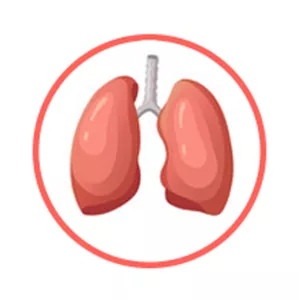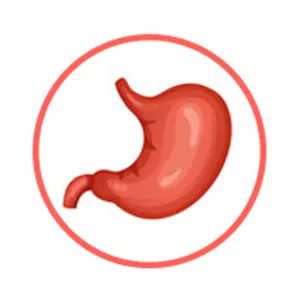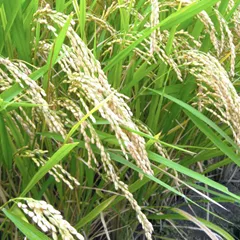Lung atrophy according to Chinese Medicine
The information provided here is not a replacement for a doctor. You shouldn't use it for the purpose of self-diagnosing or self-medicating but rather so you can have a more informed discussion with a professional TCM practitioner.
Lung atrophy factsheet
Possible causes and remedies:
Symptoms: Insomnia Dry cough Dry mouth and thirteen other symptoms
Recommended formula: Yang Yin Qing Fei Tang and four other formulas
Symptoms: Thirst Retching Dry mouth and sixteen other symptoms
Recommended formula: Mai Men Dong Tang and four other formulas
In Chinese Medicine, lung atrophy can be associated with two so-called "patterns of disharmony". Chinese Medicine sees the body as a system, not a sum of isolated parts. A "pattern" is when the system's harmony is disrupted. It is not equivalent to the Western concept of "disease", as a matter of fact here lung atrophy can be caused by two different patterns.
To understand whether someone's lung atrophy might be caused by a given pattern, one needs to look for signs and symptoms associated with the pattern beyond what one might typically experience from lung atrophy alone. For instance when lung atrophy is caused by the pattern Lung Yin Deficiency, patients also experience symptoms such as hoarse voice, tickly throat, aversion to speak and thin chest. Similarly, patients with Lung Yin Deficiency typically exhibit rapid (Shu), empty (Xu) or floating (Fu) pulses as well as Normal or red color with no coating.
We've listed below a description of the two patterns associated with lung atrophy so that you can start to get an understanding of the various possibilities according to Chinese Medicine.
Once identified, patterns are often treated using herbal formulas. Drinking herbal infusions is the most common remedy in Chinese Medicine, together with acupuncture. Here we detail below Mai Men Dong Tang, a formula that can help treat the patterns Lung Yin Deficiency and Stomach Yin Deficiency.
The two "patterns of disharmony" associated with lung atrophy

The Lungs is a so-called "Zang" Organ. Learn more about the Lungs in Chinese Medicine
Lung Yin Deficiency
Pulse type(s): Rapid (Shu), Empty (Xu), Floating (Fu)
Tongue coating: Complete absence of coating
Tongue color: Red
Recommended herbal formulas: Yang Yin Qing Fei Tang, Qing Zao Jiu Fei Tang, Bu Fei E Jiao Tang, Jiu Xian San, Mai Men Dong Tang
Symptoms: Insomnia Dry cough Dry mouth Tiredness Thin chest Weak voice Dry throat Malar flush Hoarse voice Night sweats Tickly throat Aversion to speak Hot palms and soles Thin body lacking strength Feeling of heat in the afternoon Low-grade fever in the afternoon
Exterior Heat and Dryness can invade the Lungs and exhausts the Body Fluids. If it is not dealt with for a long time, it leads to Lung Yin Deficiency. Typical manifestations are dry cough, throat and mouth, aversion to speak as well as Hoarse voice.
Other factors can cause this pattern such as the Deficiency of Kidneys or Stomach Yin as well as prolonged Lung Qi Deficiency due to excessive smoking or use of voice.
Empty-Heat symptoms appear if the Lung Yin Deficiency condition is not treated for a while. Patients can feel malar flush, low-grade fever as well as Heat in the palms and chest, especially in the evenings.
Lung Yin Deficiency generally occurs in middle-aged and elderly patients as a result of overwork, irregular diet and smoking. However, it can also occur in a child after whooping cough.

The Stomach is a so-called "Fu" Organ. Learn more about the Stomach in Chinese Medicine
Stomach Yin Deficiency
Pulse type(s): Empty (Xu), Floating (Fu)
Tongue coating: Partial absence of coating
Tongue color: Red
Recommended herbal formulas: Mai Men Dong Tang, Yi Wei Tang Shen Ling Bai Zhu San, Mai Men Dong Tang, Yi Wei Tang
Symptoms: Thirst Retching Dry mouth Hiccuping Dry throat Dry stools Constipation Poor appetite Slight thirst Bleeding gums Epigastic pain Epigastric pain No desire to eat Feeling of hunger Feeling of fullness Hot palms and soles Desire to drink in small sips Feeling of heat in the afternoon Slight feeling of fullness after eating
The Stomach is responsible for receiving foods and drinks, ripening them and sending them to the Spleen for further digestion. Therefore, the Stomach is the origin of Body Fluids. It is also an Organ that likes Cold and Dampness which are both Yin characteristics. Stomach Yin Deficiency harms this functions and cause Dryness and Heat. As a result, symptoms such as thirst, dry stools, dry mouth and dry throat appear. It also cause the tongue coating to fall off.
Due to lack of Body Fluids, there is constipation with dry stools. Retching and hiccups may also occur as Stomach's Qi downward function is impaired.
If the Yin Deficiency situation last for a long period of time, it can potentially develop Empty-Heat. It's typical manifestations are often quite mild and appears only in the afternoon or evening, such the mild fever or feeling of heat. The patients experiences thirst or hunger but there is no desire to drink or eat, or they only drink in small sips. They also prefer warm liquids and their appetite is poor.
Mai Men Dong Tang, a herbal formula that might help with lung atrophy



The top herbs in Mai Men Dong Tang are Dwarf Lilyturf Roots (Mai Dong), Ginseng (Ren Shen) and Rice Sprouts (Jing Mi)
Mai Men Dong Tang
Source date: 220 AD
Number of ingredients: 6 herbs
Key actions: Nourishes the Stomach. Generates Body Fluids. Directs Rebellious Qi downward.
Why might Mai Men Dong Tang help with lung atrophy?
Because it is a formula often recommended to help with the patterns Lung Yin Deficiency and Stomach Yin Deficiency which are sometimes associated with lung atrophy. If any of these patterns look like something you might suffer from, this formula might help (although please seek confirmation with a professional practitioner beforehand).
Symptoms related to lung atrophy
Dry mouth Dry throat Hot palms and soles Feeling of heat in the afternoon Hoarse voice Tickly throat Aversion to speak Thin chest Dry cough Weak voice

